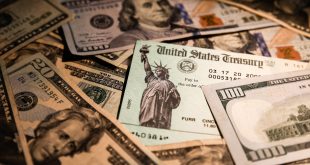Experts who have watched economic policies unfold over decades, find the latest affirmation from S&P Global Ratings both vindicating and thought-provoking. In a bold move that defies conventional wisdom, President Donald Trump’s tariffs are proving to be more than just trade bluster—they’re a strategic revenue engine helping stabilize America’s finances.
S&P’s decision to hold the U.S. credit rating at AA+ with a stable outlook underscores this: tariff revenues are expected to offset the fiscal strains from recent tax cuts under the One Big Beautiful Bill Act. This isn’t just number-crunching; it’s a signal that aggressive trade policies can deliver real benefits, challenging the chorus of doubters who predicted doom.
Revenue Surge and Economic Resilience
Let’s dive into the numbers that make this compelling. Tariff collections skyrocketed to $30 billion in July alone, a staggering 242% increase from the previous year, according to Treasury Department data. Year-to-date, customs duties have reached $152 billion—nearly double last year’s figures—and projections suggest they could generate over $2 trillion in the next decade if sustained. This influx directly counters the deficit-widening effects of tax reductions, allowing the government more fiscal wiggle room without immediate borrowing spikes.
What’s more, the U.S. economy remains a powerhouse. Per capita GDP tops $89,000 in 2025, and post-pandemic growth has outpaced peers like Europe and Japan. Even amid a slowdown—GDP averaged 1.25% in the first half, down from 2.8% in 2024—the fundamentals hold strong. S&P highlights this resiliency, noting a diversified economy that weathers shocks better than most. Compare this to past trade skirmishes, such as the 2018-2019 tariffs, which initially rattled markets but ultimately spurred domestic manufacturing investments.
This time, with broader application including up to 50% on key imports, the strategy appears even more potent in addressing chronic trade imbalances.
Hidden Costs and Why They’re Worth It
Of course, no policy is without trade-offs, and tariffs are no exception. Critics point out that these duties act as a tax on importers, often passed to consumers through higher prices. The Tax Policy Center estimates an average household hit of about $2,700 in additional costs by 2026, disproportionately affecting lower-income families. Job growth stumbled in July with only 73,000 additions—far below forecasts—amid business hesitation over tariff uncertainty and frequent rate tweaks.
Yet, these short-term pains pale against the long-term gains. Historical parallels, like the Smoot-Hawley Tariff Act of 1930, are often invoked as cautionary tales, but today’s context differs: targeted enforcement and negotiations have mitigated retaliatory escalations from partners like China. Revenue from tariffs not only plugs fiscal holes but enables pro-growth measures, such as sustained tax relief that boosts consumer spending.
Wharton models projecting a 6% GDP drop over time overlook the adaptive power of U.S. innovation—think how supply chains shifted post-2018, reducing reliance on vulnerable imports.
A Path to Sustained Strength
Moving forward, expect tariffs to evolve as a tool for fairer global trade, potentially narrowing the U.S. trade deficit by pressuring allies and adversaries alike. To maximize benefits, policymakers should pair them with targeted relief for affected industries, like rebates for small businesses. If managed astutely, this approach could erase chunks of the national debt, now nearing 100% of GDP, while fostering domestic job creation in sectors like steel and autos.
In an era of mounting debt and geopolitical tensions, Trump’s tariffs represent a gutsy bet on American exceptionalism. They’re not perfect, but as S&P’s nod confirms, they’re working—delivering revenue, resilience, and a reminder that bold actions can redefine economic narratives. The real question is whether we capitalize on this momentum or let fear dilute the progress.
 Noor Trends News, Technical Analysis, Educational Tools and Recommendations
Noor Trends News, Technical Analysis, Educational Tools and Recommendations





